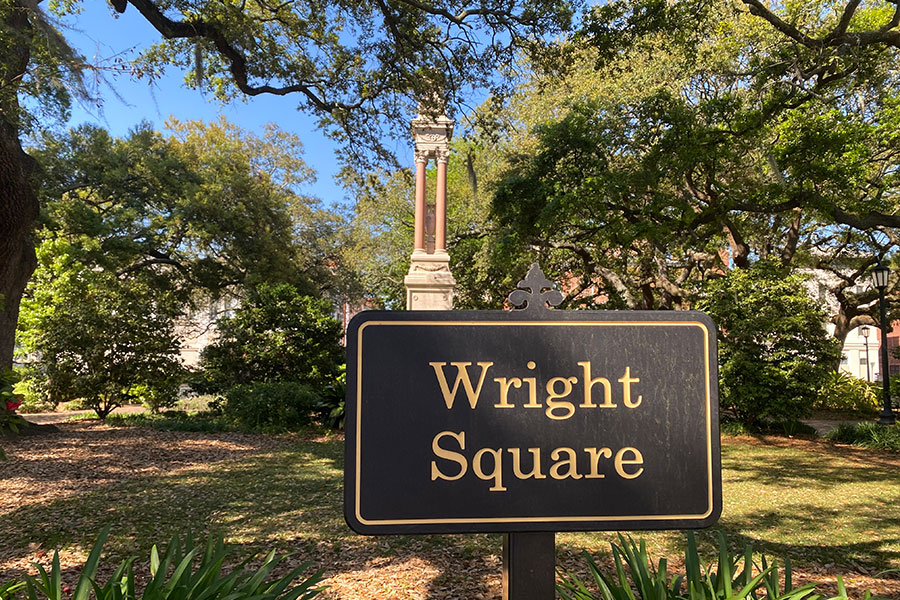Wright Square
Savannah Squares > Wright Square

About This Square
Photos
This is one of the original squares laid out in 1733 by James Oglethorpe. When it was first created it was called Percival Square, named after an English Lord, but then renamed in 1763 after James Wright, the last of Georgia’s “royal governors.”
To understand the monuments here, you have to understand Savannah history. When James Oglethorpe landed in Savannah he was met by a leader in the Creek Indian tribe named Tomochihi. They became friends and the Native American is largely credited with the smooth transition of the land to the colonies. When he died in 1739, he was buried here in Wright Square with a monument in the center of a pyramid of stones collected from nearby locations.
In 1883, the local government decided to create a memorial to William Washington Gordon, a former mayor of Savannah and they chose the center of Wright Square for its location, replacing the pyramid of stones that honored Tomochichi. A lot of people weren’t happy about that, but since nobody could remember where, specifically, Tomochichi was buried in the square, they went ahead and created the new memorial for Gordon. In 1899 a massive piece of granite from Stone Mountain, Georgia was installed at the Southeast corner of the square in Tomochichi’s honor.
Speaking of Gordon, just off of Wright Square is the Juliette Gordon Low birthplace. She was William Gordon’s granddaughter, but more famously the founder of the Girl Scouts of America. The building is now home to the Girl Scout Center and historic residence.
On the east and west sides of the squares are two municipal buildings – the yellow brick Chatham County Courthouse built in 1889 and the Tomochichi Federal Building and US Courthouse, built in 1895.
The Romanesque red brick building at the southeast corner of the square was built in 1890 for John Schwarz, a mayor of Savannah, and designed by Alfred Eichberg. Eichberg was one of the few Jewish architects of the time, especially in the south, and he designed many buildings in the city including the Guckenheimer Building that is now part of the Indigo Hotel on Bay Street, the Central Georgia Railroad building that is now Eichberg hall for SCAD, the Lewis Kayton House on Forsyth Park that is now the 700 Drayton Restaurant and Mansion on Forsyth Hotel, and a church just off Forsyth Park now operating as condos.
Besides Percival and Wright, this square also went by a third name – Hanging Square. On the north side toward the river is where the town’s gallows were constructed and people convicted of capital crimes were punished here. The most famous haunted story related to this square has to do with William Wise, the very first man murdered in Savannah. They found his body in March of 1734 in his bed but his head was in a nearby pail. Two of his indentured servants – Irish immigrants Alice Riley and Richard White – were arrested for the murder. They were common-law spouses who had only arrived in Savannah a couple of months earlier and were said to have been driven to the crime by Wise’s abuse and torture.
Richard White was hanged but Alice Riley was pregnant so they waited until the baby was born, took it from here, and then brought her here to the gallows in January of 1735. Claiming innocence, it is said that she used her dying breath to curse Savannah and that is why Spanish Moss doesn’t grow on the trees in north part of this square. Her ghost is said to be seen here, searching for her baby.






